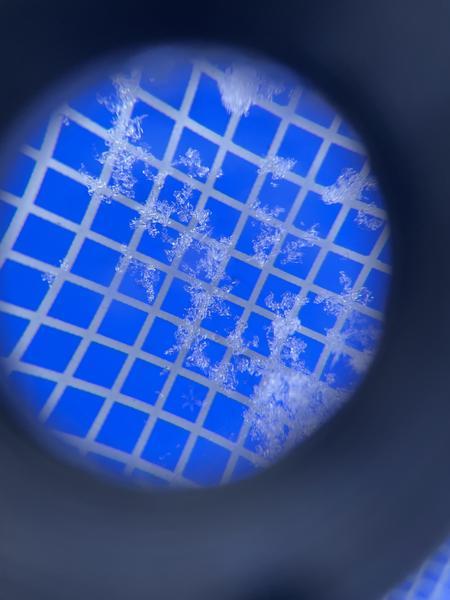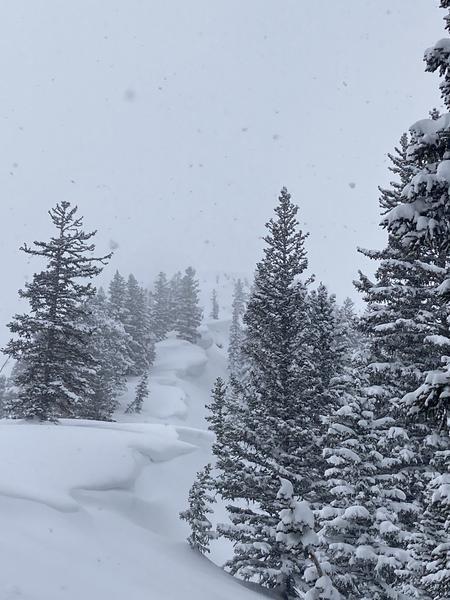Loose dry avalanches and soft cornice breaking at skis was our only direct action avalanche activity noted. We did not see any naturals in the area we visited.
Based on other obs and our snowpack tests, wind effected storm slabs seem to be the name of the game when it comes to getting propagation, and especially when associated with a crust.
1. On a Northeasterly facing slope (9,900') where we dug, the light and dry snow that fell during last week's cold northerly flow has decomposed slightly and also faceted before becoming buried by the last three-day storm event. These are very small (<1mm) and hard to detect in the profile wall, and even looking under a 18x loupe it is hard to see the development of facets on the crystals clearly. We located these with multiple compression tests and observed sudden fractures but no propagation. What we noted was that the slab characteristics were so soft (Fist hard) it could not promote propagation.
2. On southerly facing, particularly the off aspects of SE/SW, we were able to find a wind effected storm slab 50cm deep overlying a crust. Sudden fractures followed by propagation in separate tests on this layer (SSW ~9800').
After some discussion with the group, and some other pros, it seems this may be related to some melt-layer recrystalization during the same weather events that allowed the facet development on the northerly slope (Jan 22nd-23rd timeframe).
This seems to be a developing problem and is corroborated by the numerous human triggered avalanches in the last 48 hours. The strength and weight of the evidence is hard to ignore. The verification of multiple trusted sources seeing the same thing in their observations leads me to believe this is worth our continued scrutiny.










